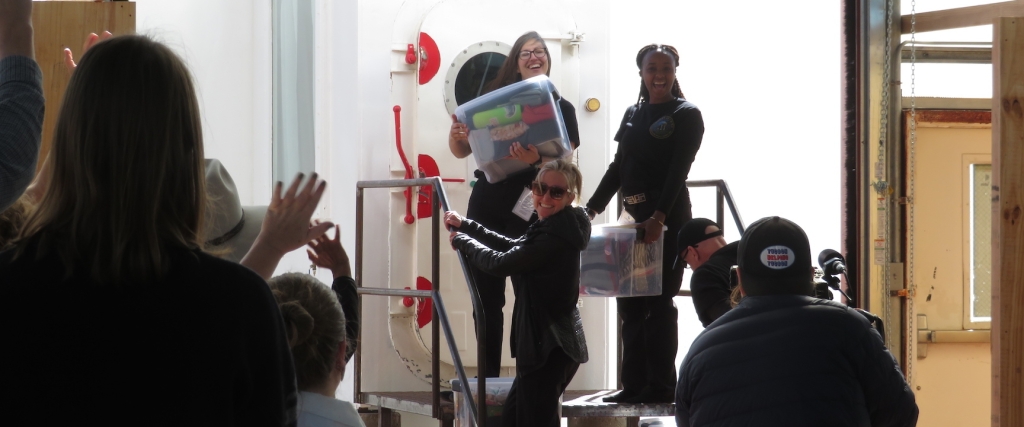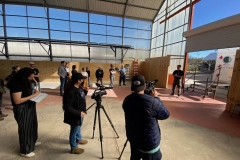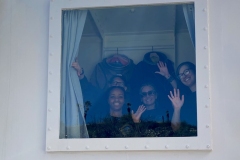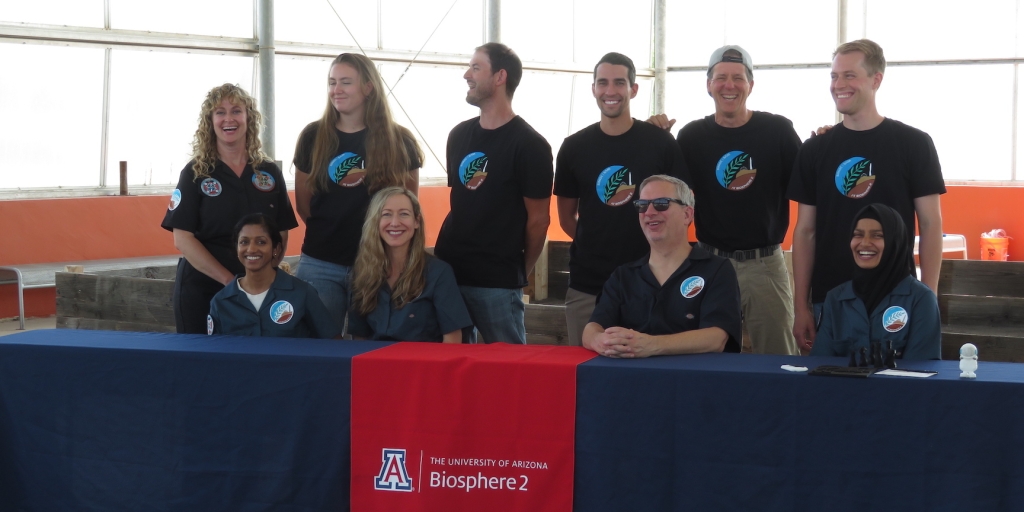Crew Imagination I CapCom: Day 1 closing
March 10, 2024, 18:11
Good evening, crew! This is CapCom checking in.
It was a delight to see you all off on your mission this morning. I hope your first eight hours in SAM have gone smoothly. The rest of the day was sunny and warm for all of us still here at Mission Control. This evening we’ll see a low of 48F (8.9C). It’s a new moon tonight, a fitting start to the mission, I’d say!
Ad lunam cum arte,
Mikayla Mace Kelley, CapCom
March 10, 2024, 18:40
Pressure: 1.3 inches
Lung height 21 inches with blower at 24 Hz and stable for 6+ hours
CO2 Lung: 774 ppm
CO2 TM: 2167 ppm
CO2 Eng Bay: 2046 ppm
CO2 Crew Quarters: 1726 ppm
Water tank level: ~60 gallons
Hydroponics: 6.3 ph, 2.1 EC
Imagination 1 entered Shackleton Base a few minutes after 10 following a lovely send-off. The base is named for Shackleton Crater in the lunar south pole region—and, of course, Shackleton Crater is named for the great Antarctic explorer. Following a team hug, we entered the Lung and spent a couple of hours perfecting the art of lung height, blower speed and maintaining internal pressure to spec. As we did, we worked up some instant poetry with the wall-mounted poetry kit. So art and air co-exist.
We were grateful for the bread (thank you) which we ate with reconstituted dehy eggs (the secret is to microwave the egg slurry for a few seconds, stir, repeat ’till it looks like scrambled eggs, not (as some did) like a strange foam weather-sealant. We [held] a mission meeting afterwards, discussing monitoring the lung (credit to Julie for taking the lead on trouble-shooting), reviewed house-keeping and safety and plans for the rest of the day.
First order of business was much-needed rest. The later afternoon has been a mixture of setting up equipment, figuring out our personal space, personal tech, where we want this or that on this or that shelf, and some creative work for us.
We are getting used to the whir and trickle of the hydroponics, which for a moment caused the crew commander to jump up to see if a leak had sprung in the TM. We are getting used to the water pump thumping—and we are paying attention to using very little water for dish clean up. –Commander Christopher Cokinos







 Keeping in the spirit of National Holidays, today one Earth we celebrate National Frog Jumping Day! In 1865, Mark Twain published his first short story, Jim Smiley and His Jumping Frog. Later, he changed the name and published it as The Celebrated Jumping Frog of Calaveras County. This same story also had a third title, The Notorious Jumping Frog of Calaveras County. Of all the frog jumping contests that take place across the country, the most well-known might be the Calaveras County Frog Jumping Contest if for no other reason than Mark Twain wrote a story about it.
Keeping in the spirit of National Holidays, today one Earth we celebrate National Frog Jumping Day! In 1865, Mark Twain published his first short story, Jim Smiley and His Jumping Frog. Later, he changed the name and published it as The Celebrated Jumping Frog of Calaveras County. This same story also had a third title, The Notorious Jumping Frog of Calaveras County. Of all the frog jumping contests that take place across the country, the most well-known might be the Calaveras County Frog Jumping Contest if for no other reason than Mark Twain wrote a story about it.